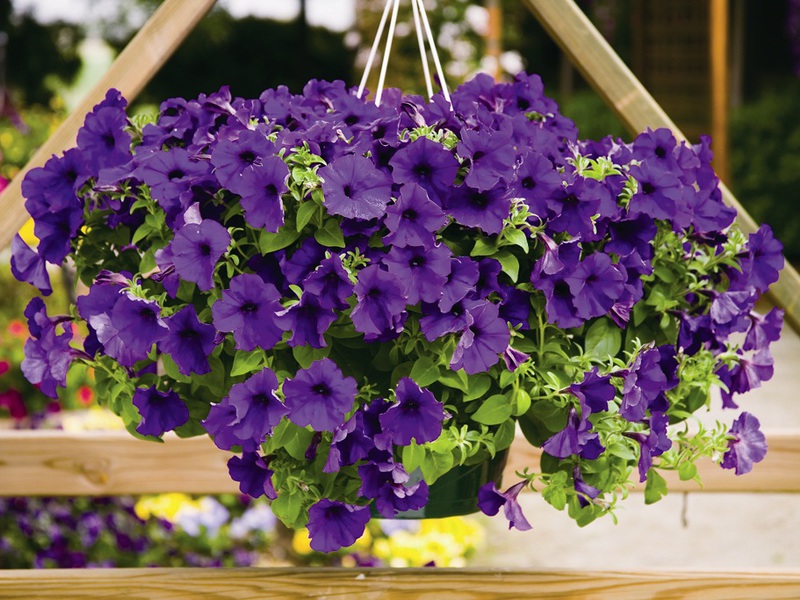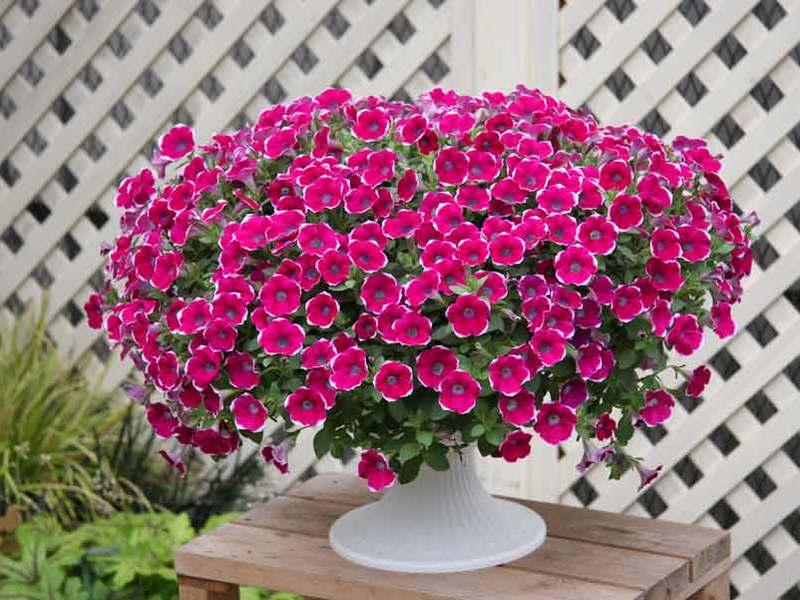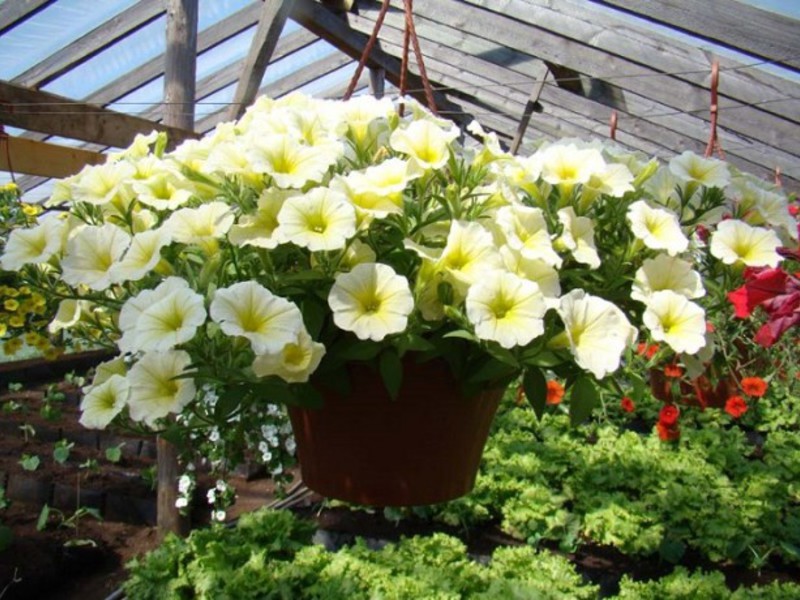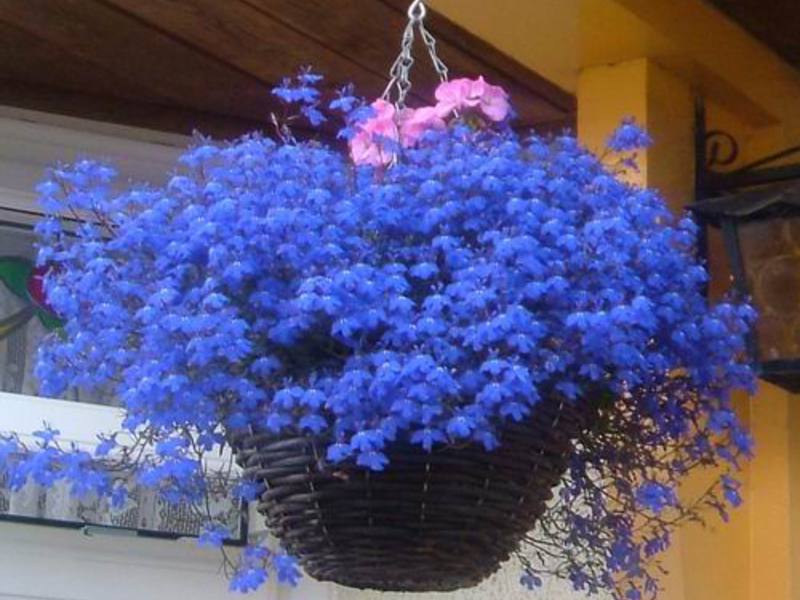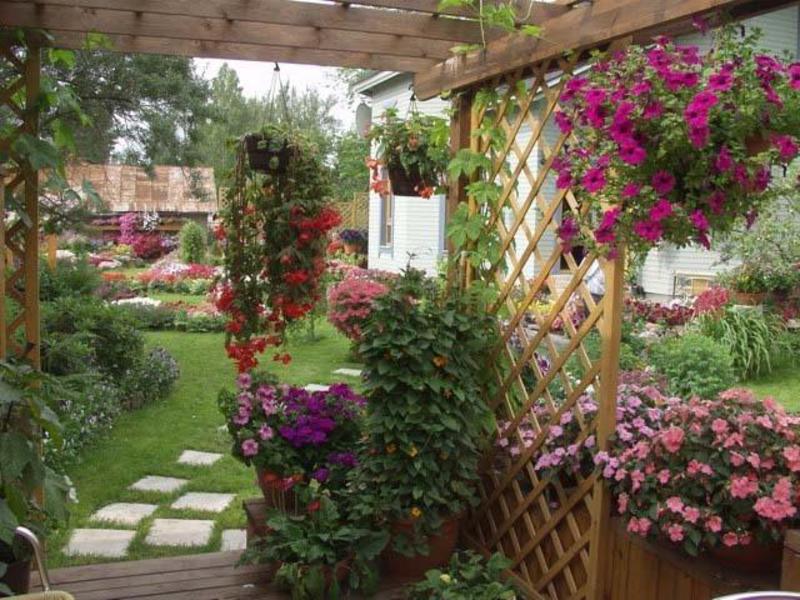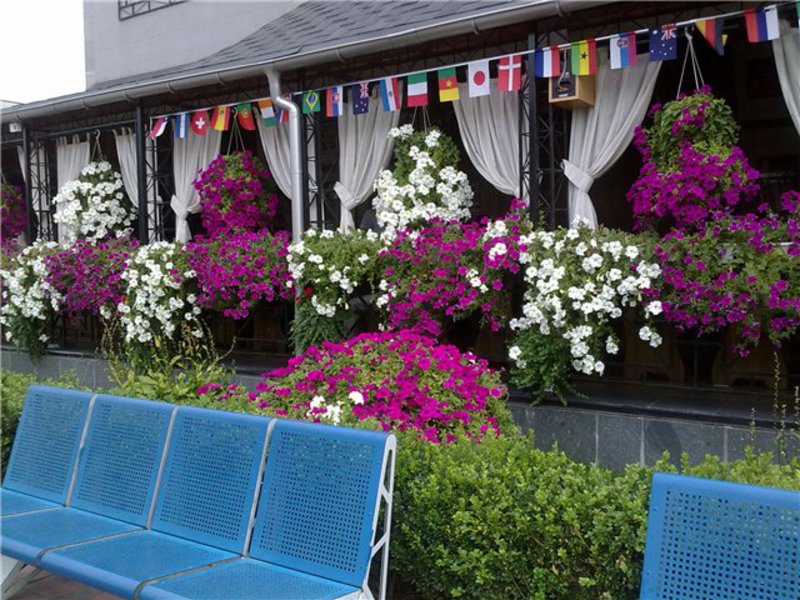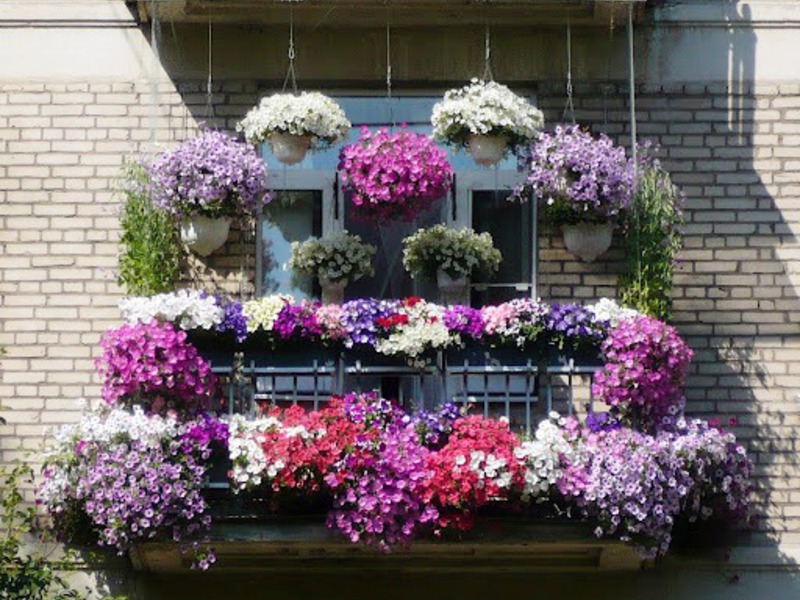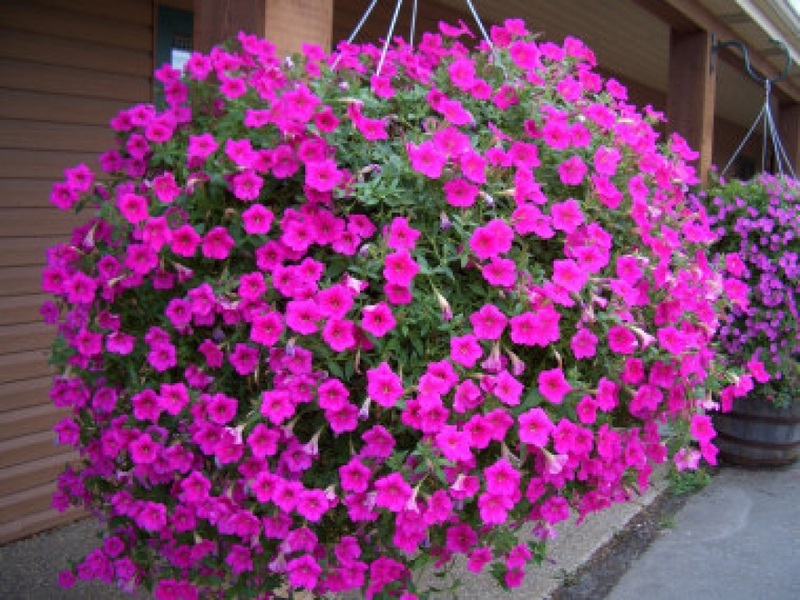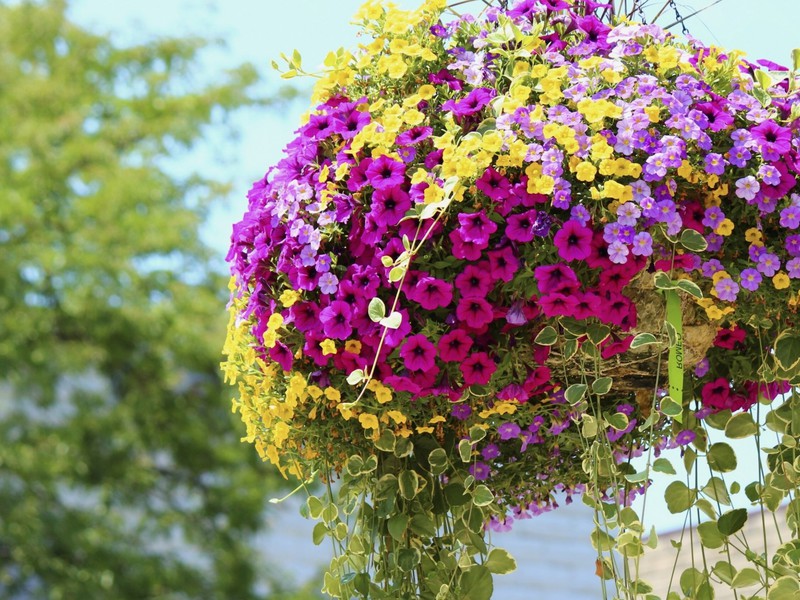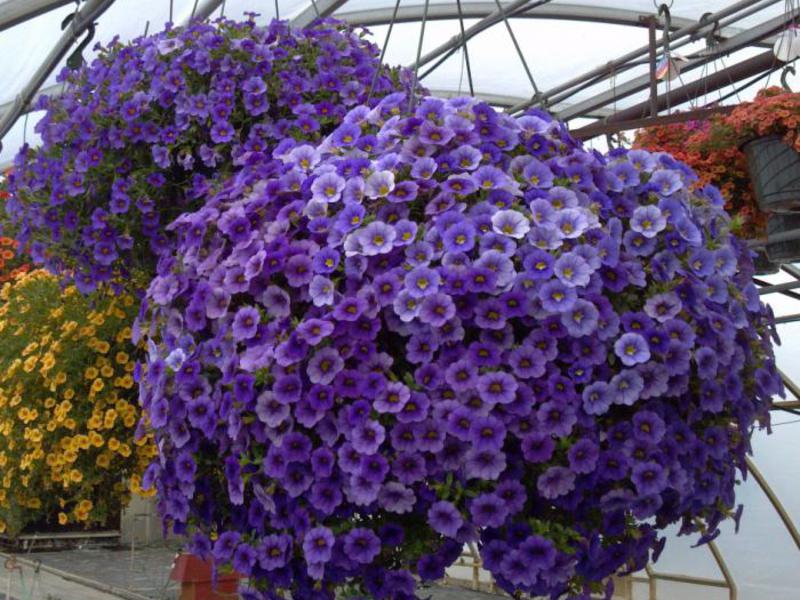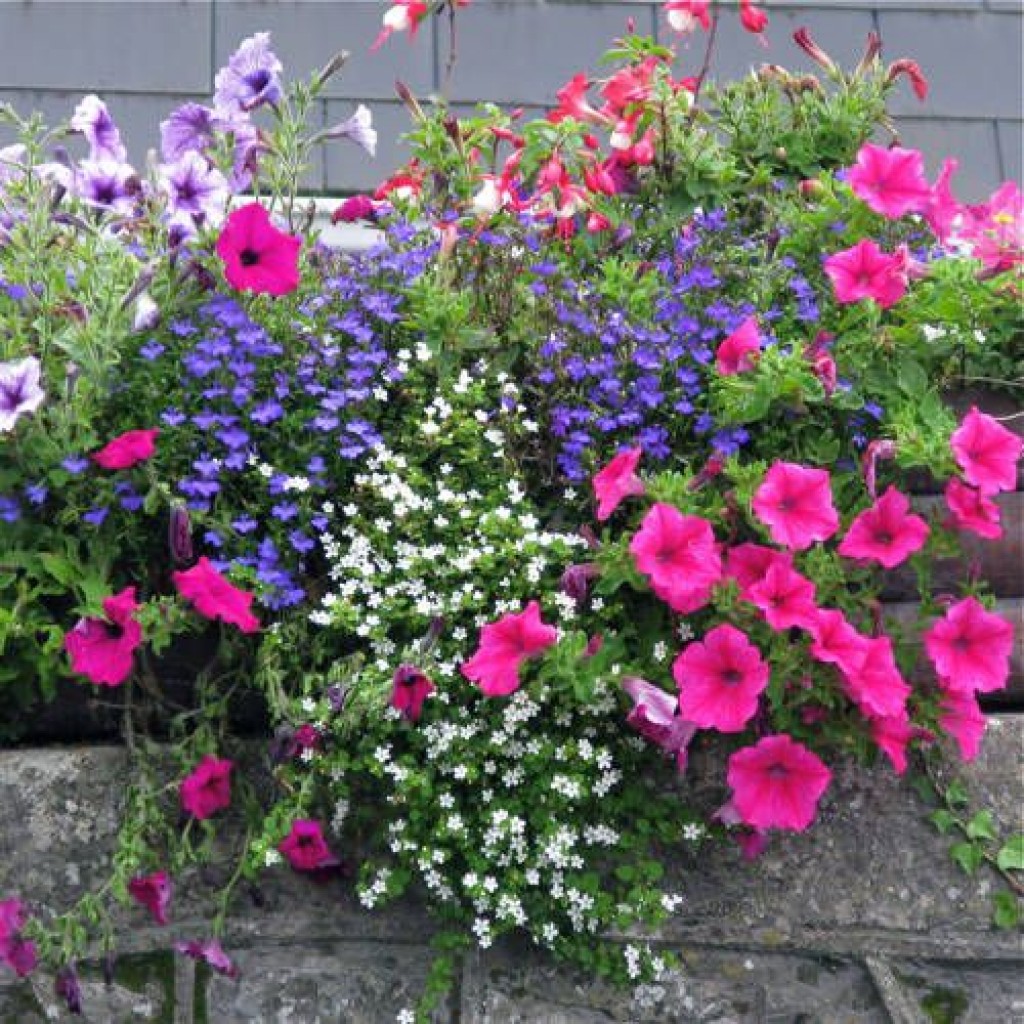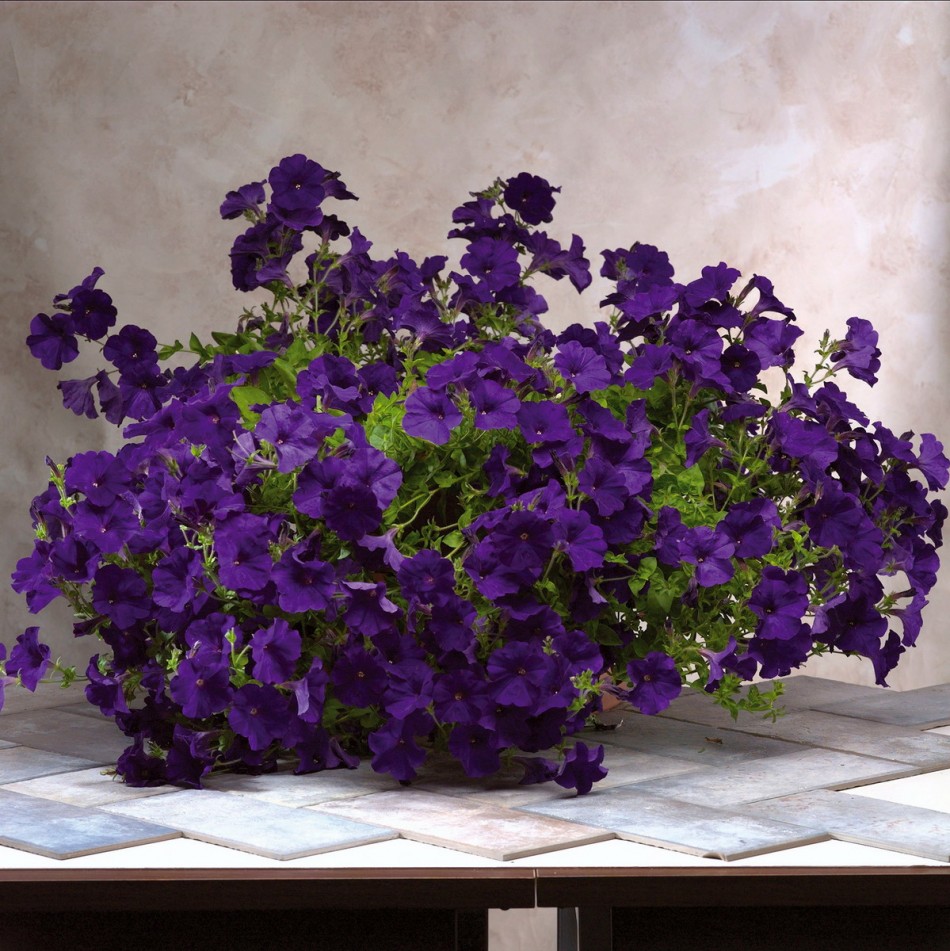Petunia flowers have long been used as a decoration for the territory of private houses. Breeders have bred a huge number of different varieties, among which there was a place for ampelous petunias. The peculiarities of the variety are that the flower has a simply colossal growth rate, large flowering, as well as high resistance to adverse conditions and sudden climate change. That is why ampelous petunia has proven itself so well in Russia, where, due to climatic features, many plants simply cannot take root.
Content
Types of ampelous petunias
Many gardeners, even from the category of amateurs, gave the ampelous petunia their name - surfiniya, but in fact this is wrong. Surfinia is just one of the varieties of the ampelous petunia species, which begin their flowering in mid-June and continue until the onset of frost. In addition to surfinia, tumbelina belongs to the type of ampelous petunia, characterized by large terry buds, supertunia and fortunia with small flowers.
Planting and reproduction of petunia flowers
 Planting and caring for petunias have their own nuances. It is possible to grow ampelous petunia only with the help of seedlings, and this is considered one of the main disadvantages. Before planting, the first step is to find a place favorable for plant growth. An area with abundant sunlight is suitable, since even a small amount of shade can significantly reduce the number of buds... As a result, it will be possible to get a large petunia bush with a small number of buds, but with a lot of green mass.
Planting and caring for petunias have their own nuances. It is possible to grow ampelous petunia only with the help of seedlings, and this is considered one of the main disadvantages. Before planting, the first step is to find a place favorable for plant growth. An area with abundant sunlight is suitable, since even a small amount of shade can significantly reduce the number of buds... As a result, it will be possible to get a large petunia bush with a small number of buds, but with a lot of green mass.
Planting seedlings begins as soon as it reaches three months of age. You can determine the readiness of a plant for planting by the first buds on the trunk. For planting, choose a warm, cloudy day without wind and better in the evening.
The soil for planting can be very different, but the plant takes root best of all. in an alkaline or neutral environment... Before planting, the soil is pre-loosened well. In the future, with favorable growth, ampelous petunia can be propagated. Two breeding methods can be used:
- grafting;
- sowing seeds.
Cuttings
You need to carefully choose a mother plant for grafting. Ampel petunia should be strong, with no obvious signs of disease and with a lot of buds. Before grafting, the mother plant must be prepared in advance, since the procedure itself begins at the end of winter, or rather, more precisely, during the period when the petunia is in a weakened state. That is why at the end of August, petunias need to cut off all long shoots and place the bush in a cellar or other room with an optimal temperature for the plant. We must not forget about the creation of artificial lighting. Usually ampelous petunias require at least 12 hours of sunshine per day.
In the middle of winter, you can see the petunia bush start to fade. This is especially evident on the green mass, namely on the leaves, which become drooping and hard.It is not worth worrying about such an unpresentable look, since the flower is in hibernation and this state is normal for it. As soon as the spring, vegetative period comes, the ampelous petunia will bloom again with the same colors, and quite quickly.
Before grafting in early spring, it is important to inspect the mother plant for insects and diseases. This must be done, even though the petunia was always in favorable conditions and under supervision. Only completely healthy cuttings have every chance of further growth. Minor diseases or insects can cause the plant to die in the early stages. Indoor temperature during the breeding season should reach 21-22 degrees.
Cuttings are cut from the plant and at the same time their length should be about 10 cm. On two leaves in the upper part, you need to cut off half of the plate. At the bottom, the plates are completely removed. After receiving the cuttings, you can start planting them. The soil should be loose enough so that you can stick the cuttings at a depth of 4–5 cm. If the soil is solid, then there is every chance of simply breaking the cuttings or, at best, the plant will not grow properly at first and then simply die. The planting density of ampelous petunias should be at least 2-3 cm.
The container with cuttings must be covered with a glass jar or plastic wrap to create condensation conditions. All flower pots are placed on the windowsill, since even at an early stage of petunia development, it requires about 10 hours of sunlight per day. If it is not possible to monitor the constant supply of sunlight, it is best to make artificial lighting using special lamps. It is quite simple to keep track of cuttings, but they also require care, which consists in constant watering and spraying. It is important that watering is done in a pallet. This method will be able to protect the plant from black leg disease. Usually, this disease starts to spread when watering directly into the soil.
When the first leaves appear, the petunia flowers are transplanted into a permanent container. If the flowers need to be placed on the ground, it is best to wait with the transplant until May, until the soil and air have warmed up to a favorable temperature. It is often impossible to transplant petunia, since she does not like this and subsequently you can get a very weak bush with a small number of buds.
Seed propagation
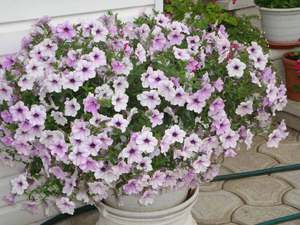 Growing petunias from seeds is difficult, as this process requires a lot of gardening experience and meticulousness. In many ways, cultivation depends not only on attention and care, but also on the quality of the seeds. It is also important to constantly monitor humidity and room temperature. The temperature for the favorable growth of petunias should be 24 degrees. If you do not monitor the temperature of growth, it simply will not be, even with proper planting and constant care.
Growing petunias from seeds is difficult, as this process requires a lot of gardening experience and meticulousness. In many ways, cultivation depends not only on attention and care, but also on the quality of the seeds. It is also important to constantly monitor humidity and room temperature. The temperature for the favorable growth of petunias should be 24 degrees. If you do not monitor the temperature of growth, it simply will not be, even with proper planting and constant care.
The whole procedure for planting petunia seeds can be split into several stages.
- Before sowing seeds, the soil is abundantly saturated with water, but it cannot be brought to a liquid state. You need to add a little potassium permanganate to the water.
- For planting seeds, you can use special peat tablets, which greatly improve the entry, but even without them, you can easily place petunia seeds.
- All planted seeds are covered with plastic wrap or glass containers and placed on the windowsill.
The process is a bit like grafting, but there are some exceptions to the rule. The container with the planted seeds must not be opened for 10-14 days. Watering during this period is not recommended, as the seeds have enough moisture that entered the soil before planting. In addition, condensation that collects on the surface of the polyethylene film additionally moisturizes the soil.
After the first shoots of petunia have appeared, the container can be opened to remove condensate from the surface of the plastic film and improve air circulation... It will be necessary to add useful components to the soil. For example, use mineral fertilizers that are sprayed over the soil surface with a spray bottle. The period of airing should be increased every day and the cover removed as soon as the first leaves appear on the seedlings.
Caring for ampelous petunia
Planting and leaving also have many interrelated key points, which include lighting, temperature, watering and soil fertilization.
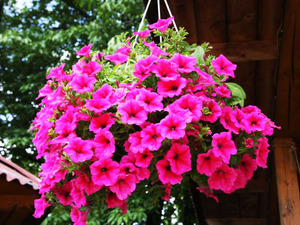 Lighting is one of the main factors for growing petunias at home or in the garden. Low light levels diminish the flowering of the plant, and it begins to build up green mass. Therefore, when planting and nursing, it is important to choose a place where a lot of sunlight gets in or create artificial lighting.
Lighting is one of the main factors for growing petunias at home or in the garden. Low light levels diminish the flowering of the plant, and it begins to build up green mass. Therefore, when planting and nursing, it is important to choose a place where a lot of sunlight gets in or create artificial lighting.- Petunia can easily tolerate sudden changes in temperature, while flowering continues until the thermometer drops to zero degrees. During frosts, flowering shoots stop blooming, and the petunia itself goes into hibernation.
- In order to achieve abundant flowering in ampelous petunias, you need to monitor constant watering. This plant is very fond of water, so it should be watered daily, and during dry periods twice a day. You cannot overdo it with watering, since stagnant water can have a detrimental effect on the root system. Waterlogging can be avoided if a good drainage system is created before planting. Lack of moisture can be identified by the color of the leaves and buds, which become lethargic and dry.
- Even when choosing a favorable area, the ampel petunia flower may require additional feeding, especially in the garden. Potassium is suitable as fertilizer, which is introduced into the soil at least twice a month. Useful trace elements significantly increase the number of buds on a flower.
Pests and diseases
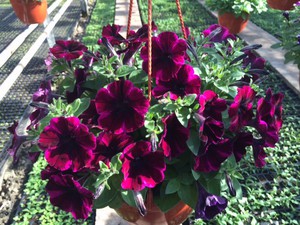 Ampel petunia, especially in the garden area, is prone to attack by aphids and ticks... In the fight against these insects, you can use solutions with the addition of laundry soap or tobacco. In addition to aphids, snails can also cause significant damage to petunias, which in a short period of time destroy most of the green mass. It is best to pick them up by hand and refuse to spray the plant with chemicals. You can also fight snails with the help of a stone placer, which prevents their movement. At home, you can use eggshells, which are scattered on the surface of the flower pot.
Ampel petunia, especially in the garden area, is prone to attack by aphids and ticks... In the fight against these insects, you can use solutions with the addition of laundry soap or tobacco. In addition to aphids, snails can also cause significant damage to petunias, which in a short period of time destroy most of the green mass. It is best to pick them up by hand and refuse to spray the plant with chemicals. You can also fight snails with the help of a stone placer, which prevents their movement. At home, you can use eggshells, which are scattered on the surface of the flower pot.
Of the diseases that ampel petunia is susceptible to, common mold is most often isolated, spreading along the trunk. Mold, especially in the garden, can cause decay of the root system and the subsequent death of the plant. A small amount of sand can help prevent mold growth. The sand scatters on the surface of the soil, but even it cannot guarantee that this disease will not begin to spread. If the first signs of fungus or mold appear, petunia should be treated with special fungicides. For this, for example, potassium permanganate mixed with water is suitable.
Conclusion
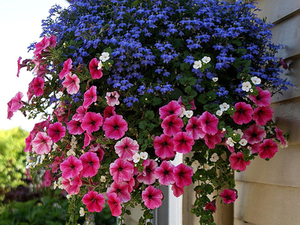 Making a beautiful ennobled plot out of your garden is not so easy, but ampelous petunia can make this work easier. This type of flower with a large number of buds can give many colors both in the house and outside, because there are many varieties of petunias. Planting and care - photos on this topic and recommendations can be found in large quantities on the Internet, since this plant is quite popular among gardeners. Only if you follow all these rules, you can achieve a positive result when growing petunias.
Making a beautiful ennobled plot out of your garden is not so easy, but ampelous petunia can make this work easier. This type of flower with a large number of buds can give many colors both in the house and outside, because there are many varieties of petunias. Planting and care - photos on this topic and recommendations can be found in large quantities on the Internet, since this plant is quite popular among gardeners. Only if you follow all these rules, you can achieve a positive result when growing petunias.

